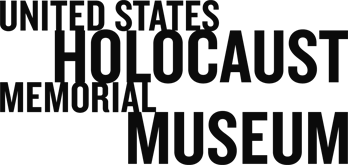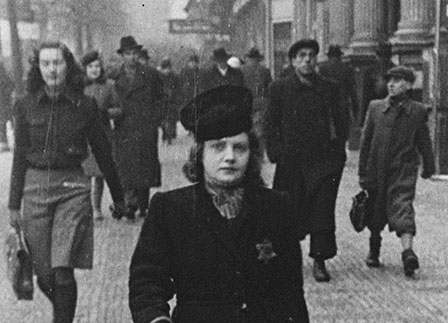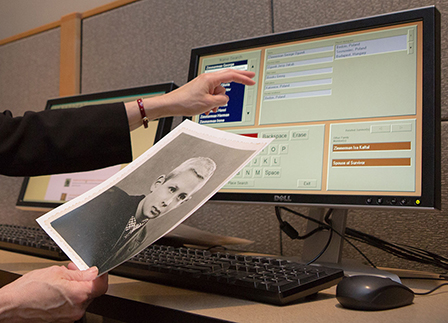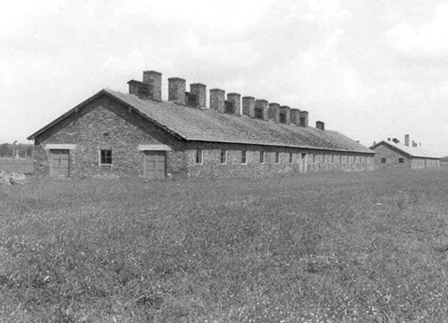- Caption
- Jewish police gathering at the main gate to the ghetto. Standing first on the left is Avrasha Stupel, who played the violin with the Kovno ghetto orchestra.
- Photographer
- George Kadish/Zvi Kadushin
- Date
-
1941 - 1943
- Locale
- Kaunas, Lithuania
- Variant Locale
- Kauen
Kovno
Kowno
- Photo Credit
- United States Holocaust Memorial Museum, courtesy of George Kadish/Zvi Kadushin
- Event History
- The Kovno ghetto Jewish police force was created on order of the German occupation authorities in July 1941, even before the ghetto was sealed. The policemen, who were initially recruited from the ranks of Jewish veterans and sportsmen, were issued separate armbands to set them apart from the rest of the ghetto population. Their primary function was to maintain order and discipline in the ghetto and to enforce the orders of the Jewish Council. The police worked closely with every Council office, particularly the labor department. With time, the police assumed additional responsibilities. Following the outlawing of a separate ghetto judiciary in August 1942, the police assumed responsibility for the ghetto's courts, which handled both civil and criminal disputes. It also became the role of the ghetto police to produce fellow Jews for forced labor brigades, maintain the two ghetto jails, and enforce German orders, including the round-up of Jews for deportation. Some ghetto residents held the police responsible for the policies it had to enforce and accused it of cooperating with the Germans. Yet, most of the police maintained high moral standards and gradually gained the respect of the population. On November 11, 1942, every member of the police force signed an oath pledging to act for the welfare of the Jewish community. In fact, several members of the police, including its commander Moshe Levin and his deputies Yehuda Zupovitz and Ika Grinberg, were active in the underground resistance movement. The Kovno ghetto Jewish police force was brought to an abrupt end during the infamous police action of March 27, 1944. German SS officers, seeking information about the ghetto's underground and hiding places, ordered the 140 members of the Jewish police to assemble. They were immediately arrested and taken to the Ninth Fort, where 36 of them, including Levin, Zupovitz and Grinberg, were executed. Others were tortured and then released. A few policemen, including Tanchum Arnshtam, revealed information about ghetto hideouts, and they became the nucleus of a new police force that worked directly with the Germans.
See "Kauen" in Encyclopedia of Camps and Ghettos, Volume 1 Part A
See Also https://encyclopedia.ushmm.org/content/en/article/kovno.



